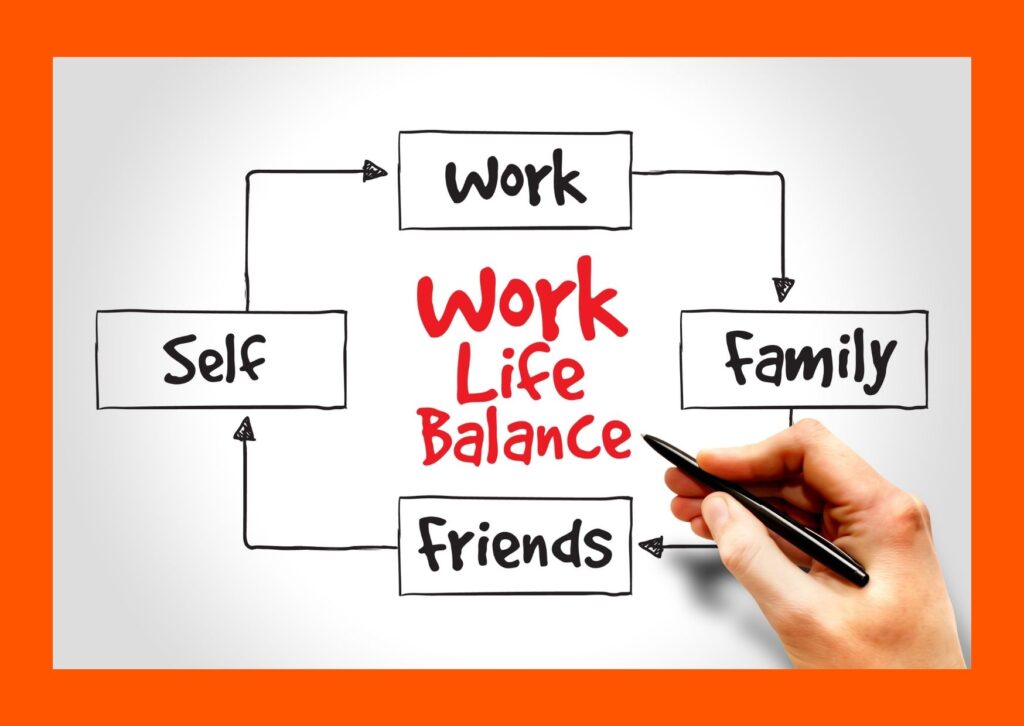Reducing Employee Turnover for a More Stable Future
In today’s fast-paced business world, high employee turnover is becoming increasingly more common.
Creating a stable, engaging, and satisfying work environment has never been more critical.
When employees decide to leave an organisation – a phenomenon known as ’employee turnover’ – the effects ripple through the business.
In this blog we’ll guide you through understanding this critical issue and explore how prioritising wellbeing can pave the way towards reduced turnover and a more stable business future.
Contents
How Does Employee Turnover Impact a Business?
What are the Financial Implications of High Employee Turnover?
What Factors Contribute to Employee Turnover?
How Does Supporting Employee Wellbeing Reduce Employee Turnover?
What Other Strategies Reduce Employee Turnover?
How Does Reducing Employee Turnover Lead to a Stable Business Future
What is Employee Turnover?
‘Employee Turnover’ might sound like business jargon, but it’s a pretty straightforward concept.
Employee Turnover is the percentage of workers who leave an organisation and are replaced by new employees over a given period.
While some degree of turnover is natural and even beneficial—bringing fresh perspectives and ideas—it can become a significant concern if it happens too frequently or affects key members of your team.
High turnover rates can signal deeper issues within the organisation, like dissatisfaction, lack of engagement, or inadequate wellbeing support.
Understanding and addressing the causes of high turnover can lead to a more positive work environment, happier employees, and a more stable, successful future for your business.

How Does Employee Turnover Impact a Business?
Employee turnover can have a profound impact on a business, affecting nearly every aspect of its operations.
When an employee leaves, it’s not just a lost body in the office.
Their unique skills, knowledge, and relationships exit the door with them, leaving a gap that isn’t easy to fill.
In the short term, workloads may increase for the remaining staff, potentially leading to stress, decreased morale, and reduced productivity.
Consistent turnover can also disrupt team dynamics and hinder long-term project planning due to constant changes in team composition.
Moreover, frequent staff changes can affect your business’s reputation.
High turnover rates can signal instability to potential hires, deterring top talents who prefer to join organisations where they can grow and thrive.

What are the Financial Implications of High Employee Turnover?
Beyond the intangible impacts, high employee turnover can pack a hefty financial punch.
The costs associated with turnover are often underestimated, as they extend far beyond the simple expense of hiring a new employee.
Firstly, there’s the direct cost of recruiting, which includes advertising vacancies, screening, interviewing, background checks, and onboarding new employees.
On top of that, consider the time invested by your HR team and hiring managers throughout the process – time that could be spent on other strategic tasks.
Secondly, there’s the cost of training and development.
This includes not only formal training programs and materials but also the time and productivity lost as new employees learn the ropes and reach their full potential.
Moreover, high turnover can lead to increased workload and overtime costs for remaining employees, which can further strain your budget.
There’s also potential for loss of business or customer dissatisfaction during the transition period, particularly if the outgoing employee held client-facing roles.
All told, it’s estimated that replacing an employee can cost anywhere from 50% to 200% of their annual salary when all factors are considered.

What Factors Contribute to Employee Turnover?
Understanding what drives employee turnover is the first step towards addressing it.
It’s like a detective story, where we have to piece together different clues to solve the puzzle. Let’s take a look at some of the most common factors:
1. Lack of Growth Opportunities
If employees feel their career is at a standstill, they might start looking for greener pastures.
Providing clear paths for advancement and growth is crucial for retaining ambitious individuals.
2. Inadequate Compensation
Pay isn’t everything, but it does matter.
If employees feel they’re not being paid what they’re worth, they’re likely to seek out better opportunities.
3. Poor Management
Managers play a significant role in the employee experience. If employees feel unsupported or undervalued by their superiors, turnover can creep up.
Check out our blog on “The Role of Managers in Supporting Employee Wellbeing”

4. Lack of Recognition
Everyone wants to feel appreciated.
A lack of recognition can make employees feel unseen and unappreciated, nudging them towards the exit.
5. Work-life Imbalance
With the line between work and personal life becoming blurrier, employers who fail to respect this balance, risk pushing employees away.
These are just some of the factors that can contribute to employee turnover.

How Does Supporting Employee Wellbeing Reduce Employee Turnover?
Supporting employee wellbeing isn’t just a nice-to-have, it’s a must-have in today’s business landscape.
A robust employee wellbeing program can play a vital role in reducing turnover by making your staff feel valued, supported, and engaged.
But how does this magic work?
1. Boosts Engagement
When employees feel their company cares about their wellbeing, they’re likely to be more engaged in their work.
This enhanced engagement can translate into higher job satisfaction and reduced turnover.
2. Enhances Physical and Mental Health
Wellness programs that promote regular exercise, healthy eating, and mental health support can help employees stay fit and happy, reducing burnout and associated turnover.
There are a range of wellbeing workshops that can help educate staff on the importance of their wellbeing.
These workshops can provide the necessary tools to support their wellbeing both in and out of the workplace.

3. Fosters a Positive Culture
A strong focus on wellbeing can foster a positive work culture where employees feel valued and appreciated.
This sense of belonging can make them think twice before leaving.
4. Improves Work-life Balance
Wellness initiatives like flexible work arrangements can help employees balance their personal and professional lives, reducing stress and the likelihood of looking for more flexible job options elsewhere.
5. Attracts Top Talent
Employees are increasingly prioritising wellbeing in their job hunt.
A robust wellbeing program can help attract and retain high-quality employees, reducing the likelihood of turnover.
In the end, supporting employee wellbeing shows your people that they are not just resources, but valued individuals whose health and happiness matter to the organisation.
This realisation can strengthen employee loyalty, increase job satisfaction, and ultimately reduce turnover.
At Loving Life, we help companies support the health and wellbeing of their employees through our Employee Wellbeing Services

What Other Strategies Reduce Employee Turnover?
While supporting employee wellbeing is a crucial aspect of reducing turnover, there are other strategies you can employ to retain your top talents.
Consider the following:
1. Clear Career Pathways
Make sure your employees know there’s room for growth and advancement in your company.
Regular check-ins about their career goals and aspirations can help you align their path within the organisation.
2. Competitive Compensation
Regularly review your compensation packages to ensure they’re competitive.
This includes not just salaries, but also bonuses, benefits, and other perks.
3. Effective Management
Train your managers to be effective leaders who can motivate their team, address issues, and provide constructive feedback.
Remember, people often leave managers, not companies.
4. Recognition and Rewards
Regularly recognise and reward your employees for their hard work and achievements.
This could be as simple as a shout-out in a team meeting or as elaborate as a performance-based bonus or award.

5. Open Communication
Foster an environment where employees feel comfortable voicing their thoughts and concerns.
Regular surveys, town hall meetings, or suggestion boxes can help you gather feedback and make necessary improvements.
6. Training and Development
Provide ongoing training and development opportunities.
This not only equips your employees with new skills but also shows your investment in their career growth.
By combining these strategies with a strong focus on employee wellbeing, you’ll be well on your way to creating a work environment where people thrive and choose to stay.
How Does Reducing Employee Turnover Lead to a Stable Business Future
Reducing employee turnover is akin to building a strong, stable foundation for your business’s future.
When your employees stick around for the long haul, it brings about several positive changes that contribute to business stability and success:
1. Consistency
Lower turnover means fewer changes in staff, leading to consistent service delivery, smoother operations, and predictable business performance.
2. Cost Savings
With less money spent on recruitment, hiring, and training new employees, resources can be channelled into growth-focused initiatives, boosting your bottom line.

3. Stronger Teams
When team members work together over time, they form stronger bonds, collaborate better, and understand each other’s strengths, leading to more efficient teamwork.
4. Deep Institutional Knowledge
Long-term employees develop deep knowledge about the company’s products, services, systems, culture, and customers, which can be invaluable.
5. Positive Reputation
A low turnover rate can boost your company’s reputation, making it easier to attract top talent and potential clients or investors.
A future with lower turnover is a future where your business is more stable, successful, and primed for sustainable growth.

Prioritising employee wellbeing and implementing other employee retention strategies are significant steps on this journey.
By doing so, you are not only investing in your employees but also in the future of your business.
In the shifting sands of the modern workplace, employee turnover will always present a challenge.
Yet, as we’ve discovered, it’s a challenge that can be mitigated with the right strategies.
By placing a priority on employee wellbeing, crafting clear career pathways, fostering open communication, and acknowledging the hard work and contributions of your team, you’re investing in people.
And people are, after all, the heart of any business.
By reducing employee turnover, your organisation can look forward to a more stable, secure, and prosperous future.
Author
Tyler Lowe – Health & Wellbeing Speaker
BSc Sport & Exercise Rehabilitation


